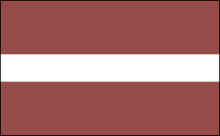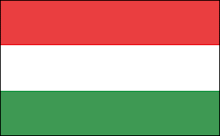

Wyświetl większą mapę
Paryż, tak jak inne duże miasta musiałem podzielić na części. Mój Paryż jest niestety w większości deszczowy, pomimo końca sierpnia :( Na pierwszy rzut idą dzielnice Pierwsza (Luwr) i Druga (plac Opery). Generalnie to i tak wszystko wygląda tam tak samo, bo takie było założenie, ale napstrykałem się, więc prezentuję :)
Paris, just like other big cities, I had to divide into smaller parts. My Paris is unfortunately rainy and wet, even if there was the end of August :( At first, there are 1st (Luvre) and 2nd (Opera Square). Generally, they look very similar, because that was the plan, but I've taken a lot of photos, so I present them here :)
 Zaraz po wyjściu ze stacji metra Auber.
Zaraz po wyjściu ze stacji metra Auber.Right outside the Auber subway station.
 Podwórek takich w pobliżu dostatek. To jest o ile mnie pamięć nie myli rue Godot de Mauroy.
Podwórek takich w pobliżu dostatek. To jest o ile mnie pamięć nie myli rue Godot de Mauroy.There are many yards like this one. This is rue Godot de Mauroy, if I remember well...
 kolejne podwórko w stylu, kolejny bohater.
kolejne podwórko w stylu, kolejny bohater.Another yard, another hero...
 Olympia Music Hall z 1889, gdzie pierwsze kroki stawiała Edith Piaff, ale również grali Charles Aznavour, The Animals, Celine Dion, Jimy Hendrix, Jeff Garland, RHCP, Led Zeppelin, Rolling Stones, Luciano Pavarotti............. lista może być baaardzo długa.
Olympia Music Hall z 1889, gdzie pierwsze kroki stawiała Edith Piaff, ale również grali Charles Aznavour, The Animals, Celine Dion, Jimy Hendrix, Jeff Garland, RHCP, Led Zeppelin, Rolling Stones, Luciano Pavarotti............. lista może być baaardzo długa.Olympia Music Hall from 1889, where Edith Piaff stared her career and many of international stars played and sang here: Charles Aznavour, The Animals, Celine Dion, Jimy Hendrix, Jeff Garland, RHCP, Led Zeppelin, Rolling Stones, Luciano Pavarotti............. the list can be veeery looong...
 Boulevard des Capucines.
Boulevard des Capucines. plac Opery
plac OperyOpera Square.
 plac Opery
plac OperyOpera Square.
 A tu nawet kawałek Opery!
A tu nawet kawałek Opery!And we can see a piece of Opera here!
 Opera Garnier.
Opera Garnier.Otwarta w 1875 z widownią dla 2200 osób. W 1896 na widownię spadł ogromny żyrandol, zabijając jedną osobę. Tu rozgrywa się akcja powieści 'Upiór w operze'. Dziś gości tu tylko balet.
Opera Garnier.
Opened in 1875 with an audience for 2200 people. In 1896 the big lamp fell down on the audience, killing one person. Here, 'Phantom of the Opera" takes place. Today, there's only ballet played here.
 Luwr - boczne wejście.
Luwr - boczne wejście.Luvre - side entrance.
 To bombkowate srebrne to wyjście z metra Louvre.
To bombkowate srebrne to wyjście z metra Louvre.This thing with bubbles it's an entrance to the Luvre subway station.
 Palais Royal.
Palais Royal.Pałac królewski, z instalacją biało-czarnych słupków różnej wielkości, czyli rzeźbą nowoczesną. Był to dom kardynała Richelieu, po nim mieszkały tu różne koronowane głowy. Dziś mieści się tu ministerstwo kultury, biblioteka narodowa, teatr...
Palais Royal.
Royal palace, with black and white things of different height (a modern sculpture). It was a home of cardinal Richelieu and many crowned heads after him. Now, there's Monistry of Culture, a theatre, National Library...
 Południk
PołudnikKiedyś myślano, że tędy przebiega południk zerowy... Tyle z niego zostało, zanim wyniósł sie do Londynu...
Meridian
They belived that there's Zero Meridian... There's only this thing left, after it got moved to London...
 Radosne wyjście ze stacji Louvre.
Radosne wyjście ze stacji Louvre.A happy entrance to Louvre station.
 Rue de Rivoli.
Rue de Rivoli. Dziedziniec Luwru. Jedno z najstraszniejszych miejsc na ziemi... Wlazłem tam zobaczyc własnym okiem Monę Lizę, Wenus z Milo i miliard innych dzieł, ale tłumy i natłok wrażeń zabił mnie po godzinie... Obłąkane stada wpadające na wszystkich i wszystko i presja historii bardzo mnie osłabiły...
Dziedziniec Luwru. Jedno z najstraszniejszych miejsc na ziemi... Wlazłem tam zobaczyc własnym okiem Monę Lizę, Wenus z Milo i miliard innych dzieł, ale tłumy i natłok wrażeń zabił mnie po godzinie... Obłąkane stada wpadające na wszystkich i wszystko i presja historii bardzo mnie osłabiły...Louvre yard.
Louvre is one of the worst places on Earth. I came here to see Mona Lisa, Venus from Milo and miliard other things, but the crowds and the abundance of emotions killed me after an hour... Mad herds of people running around and trampling everything... It made me so weak...
 Słynna piramida przed wejściem.
Słynna piramida przed wejściem.Famous pyramid in front of the entrance.


 Arc de Triomphe du Carrousel
Arc de Triomphe du Carrousel Rue de Rivoli
Rue de Rivoli Koło w ogrodach Tuileries (o nich później) przy rue de Rivoli.
Koło w ogrodach Tuileries (o nich później) przy rue de Rivoli.Near the Tuileries Gardens (later about them) by rue de Rivoli.

 Lwy przed Luwrem od Sekwany, przy Quai Francois Mitterand
Lwy przed Luwrem od Sekwany, przy Quai Francois MitterandLions in front of Louvre next to Seine, by Quai Francois Mitterand

























































